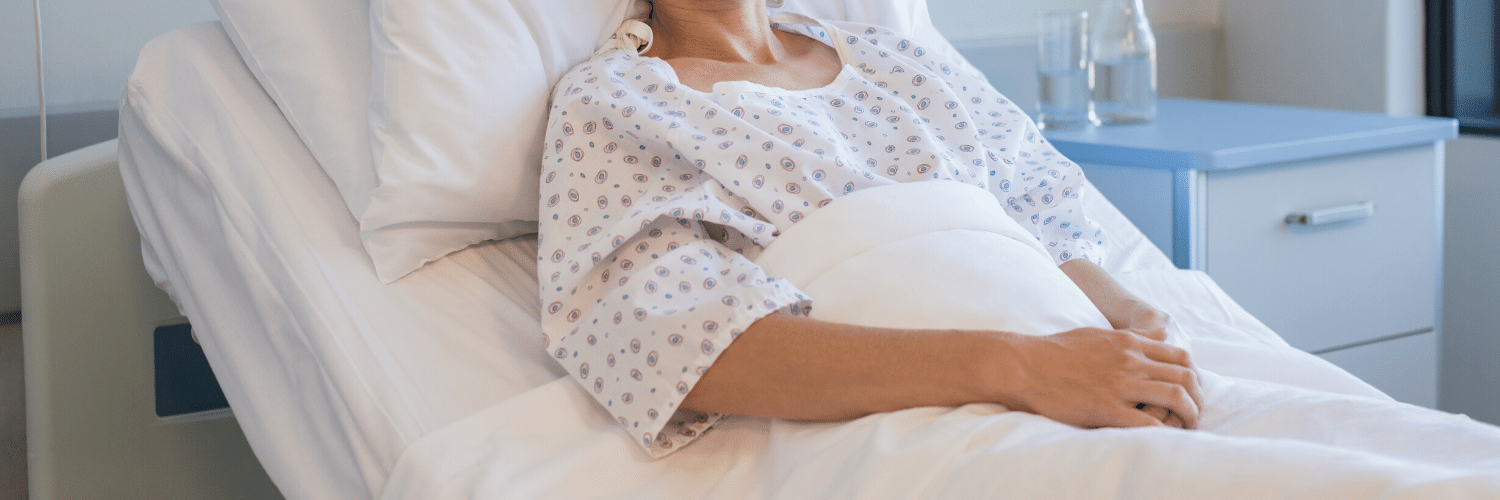
- 0 Comments
- PRMA Plastic Surgery
What breast reconstruction procedure has the easiest recovery?
When considering breast reconstruction, a big concern for many patients is post-operative pain. Many women presume breast reconstruction with implants is the least painful option since the procedure is less invasive and has a shorter operative time than other reconstructive options, but studies have shown this is not the case.
A recent study looked at patients who underwent mastectomy and immediate breast reconstruction with either tissue expanders placed under the chest muscle, or muscle-sparing/preserving abdominal flaps including DIEP flaps. Patient-reported pain levels after surgery were measured, as well as the amount of narcotic drug use. The results showed the implant-based reconstruction patients reported more pain and used more narcotics than the patients who had DIEP flap reconstruction.
Although the DIEP flap procedure is more invasive and takes longer than traditional tissue expander reconstruction, DIEP flap patients experience less pain for a couple of reasons:
- The DIEP flap minimizes muscle trauma and preserves all the patient’s abdominal and chest muscles. Most implant-based breast reconstruction involves placing the implant under the chest (pectoral) muscle. This requires releasing and lifting the muscle off the chest wall to create a pocket for the implant which is painful and adds to the recovery.
- For patients who are not candidates for direct-to-implant procedures, tissue expanders are progressively filled over time to stretch the tissues. This expansion process can be very uncomfortable for some patients.
At PRMA Plastic Surgery, we take extra steps to ensure minimal discomfort and shorter hospital stays for our patients after DIEP flap reconstruction.
In fact, with the implementation of our Enhanced Recovery after Surgery (ERAS) protocol, patients rarely need narcotics to control pain levels after surgery. Patients actually begin the protocol the morning BEFORE surgery to ensure a baseline level of pain control is already in place at the time surgery begins. Our surgeons then inject very long-acting local anesthetic at the time of surgery (known as “blocks”) at each surgical site to ensure an excellent level of pain control is achieved before the patient even awakens from surgery. These “blocks” have dramatically improved and minimized abdominal discomfort after DIEP flap surgery.
Most PRMA patients are able to maintain extremely good pain control post-operatively with non-narcotic drug combinations including Celebrex and extra-strength Tylenol. Several other oral pain medication options are also available for those who cannot tolerate these first line choices.
The Enhanced Recovery Protocol also includes a specially-formulated carbohydrate drink which the patient takes before surgery. This helps the body process anesthesia quicker, decreases post-operative nausea, and also optimizes healing. The formula decreases nausea by increasing gastric motility. This allows patients to tolerate solid food earlier after surgery and also decreases the risk of constipation. Not having to depend on narcotics for pain control decreases the tendency for constipation even further.
All these improvements in recovery mean patients are up out of bed much earlier after surgery and are also ready to go home sooner; our Enhanced Recovery Protocol has decreased patient hospital stay after DIEP flap surgery to just three nights.
“I was up and walking laps the day after my surgery,” shares PRMA DIEP flap patient Sherry. “I was really worried about my recovery because opioids make me very sick, but there were never any issues since I was able to easily control my discomfort using the prescribed Celebrex and Tylenol.”
Author: Dr. Minas Chrysopoulo & Courtney Floyd
The results showed the implant-based reconstruction patients reported more pain and used more narcotics than the patients who had DIEP flap reconstruction.
Leave Comment
Sign Up for Our Monthly Newsletter
Continue Reading

Tissue Expander/Implant vs DIEP Flap Breast Reconstruction: Which Provides the Easiest Recovery?

Male Breast Cancer Survivor Strives to Bring Awareness to the Disease
Male Breast Cancer Survivor Strives to Bring Awareness to the Disease July 16, 2020 Share on Facebook Twitter Linkedin What is is like having male breast cancer? Recently I had the privilege of speaking with a lovely couple whose lives’ have been impacted by breast cancer. This is their story: A few years back, Michael […]

Helping Women Restore Feeling To Reconstructed Breast After Mastectomy
Helping Women Restore Feeling To Reconstructed Breast After Mastectomy July 16, 2020 Share on Facebook Twitter Linkedin How do surgeons help restore feeling after a mastectomy? Breast reconstruction helps women feel “whole” again both physically and emotionally after breast cancer by restoring what cancer tried to take away. During a mastectomy, nerves that supply the […]

10 Tips to Prepare for Breast Reconstruction Surgery
10 Tips to Prepare for Breast Reconstruction Surgery July 16, 2020 Share on Facebook Twitter Linkedin How can you prepare for breast reconstruction surgery? If you were going to give a close friend one piece of advice to prepare for breast reconstruction, what would it be? This is the question I recently presented to our social […]

DIEP Flap Breast Reconstruction on the Rise
DIEP Flap Breast Reconstruction on the Rise July 16, 2020 Share on Facebook Twitter Linkedin How often is DIEP flap reconstruction performed in the nation? A recent study published by PubMed shows there is an increased use of autologous breast reconstruction after mastectomy. Using the Nationwide Inpatient Sample database, information on breast cancer and mastectomy […]

PRMA is Celebrating 607 DIEP Flaps for 2016
PRMA is Celebrating 607 DIEP Flaps for 2016 July 16, 2020 Share on Facebook Twitter Linkedin A few weeks ago, we announced our record breaking 600th DIEP flap breast reconstruction procedure for 2016! We kept at it for the few working days remaining in the year, and we are proud to announce we performed a […]

PRMA Plastic Surgery Represented at ASRM 2017
PRMA Plastic Surgery Represented at ASRM 2017 July 16, 2020 Share on Facebook Twitter Linkedin The American Society of Reconstructive Microsurgery held its annual meeting in Hawaii this year! The meeting kicked off last Thursday and wraps up today! The American Society for Reconstructive Microsurgery (ASRM) was established in 1984 and has served “to promote, […]

Breast Cancer “Vaccine” Offers Hope
Breast Cancer “Vaccine” Offers Hope July 16, 2020 Share on Facebook Twitter Linkedin What is the breast cancer vaccine? Researchers have announced a potential new treatment for early stage breast cancer. The therapy is being called an “immunology vaccine” and works by enhancing your immune system, helping your body to use its best weapon to […]

600 Flap Breast Reconstructions – A New Record For PRMA Plastic Surgery
600 Flap Breast Reconstructions – A New Record For PRMA Plastic Surgery July 16, 2020 Share on Facebook Twitter Linkedin Congratulations are in order for the surgeons of PRMA Plastic Surgery! Today they set a new record by performing their 600th free flap microsurgical breast reconstruction procedure this year! This makes PRMA Plastic Surgery one […]

The Importance of Support During Breast Cancer
The Importance of Support During Breast Cancer July 16, 2020 Share on Facebook Twitter Linkedin hy is support important after a breast cancer diagnosis? This week a new study publish in Cancer suggests breast cancer patients who are socially isolated may have a greater risk of dying from their disease compared to patients who have more social ties. […]


No Comments